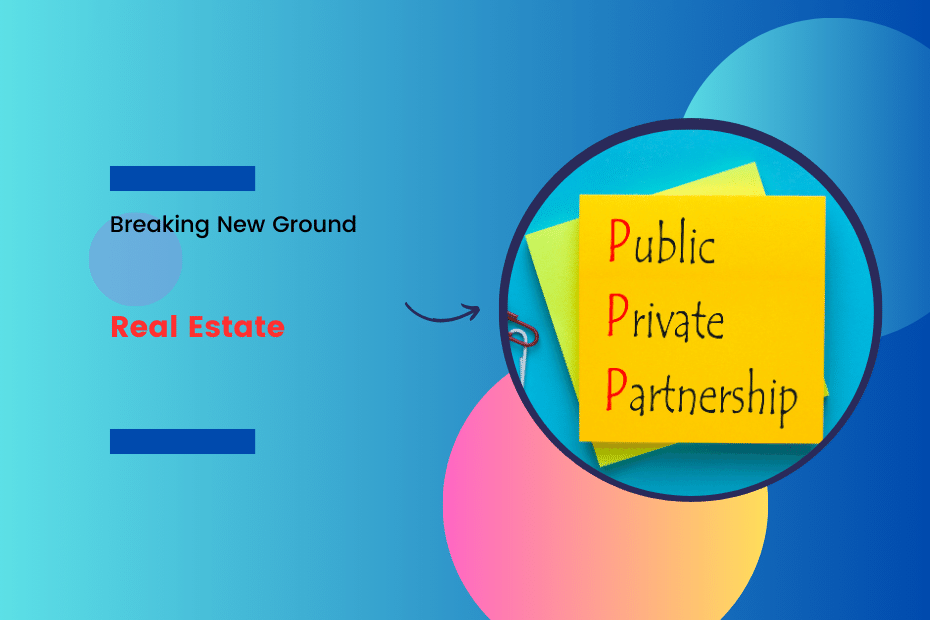In the dynamic world of real estate development, Public-Private Partnerships (PPPs or P3s) represent a powerful alliance between the government and private sector, aiming to bring forth projects that might not be feasible through traditional methods. This collaborative approach combines the efficiency, innovation, and capital of the private sector with the accountability, social objectives, and regulatory capabilities of the public sector. The trend towards leveraging PPPs in real estate is growing, driven by the recognition that such partnerships can effectively address complex challenges. Through shared expertise, risks, and rewards, PPPs unlock new possibilities for sustainable and innovative development, offering a multifaceted solution to the pressing needs of communities and economies alike.
Understanding Public-Private Partnerships (PPPs)
PPPs are essentially collaborative agreements crafted between government entities and private sector parties. These partnerships are designed to deliver public assets or services, where the private party often assumes a significant portion of the risks and management responsibilities. The allure of PPPs lies in their ability to merge public goals with the efficiency and capital of the private sector, resulting in projects that might otherwise be unattainable due to financial or logistical constraints.
The structure of PPPs can vary widely, encompassing contractual agreements, cooperative models, and even corporate joint ventures, each tailored to meet the unique objectives and circumstances of the development goals. Contractual agreements might involve the private sector in the design, construction, and operation of a project, with clear stipulations on performance standards and risk allocation. Cooperation models may focus more on shared responsibilities and mutual benefits without forming a new corporate entity. In contrast, corporate structures often involve creating a joint venture to manage and deliver the project, combining resources and expertise to achieve common objectives. These diverse models reflect the versatility of PPPs in addressing a range of development challenges, from infrastructure projects to social housing and beyond, demonstrating their potential as a strategic tool for sustainable urban and community development.
The Strategic Advantages of PPPs in Real Estate
Public-Private Partnerships (PPPs) in real estate are not just about bringing projects to life; they are about doing so in a way that is smarter, more efficient, and more beneficial to all stakeholders involved. One of the key benefits of PPPs is their ability to allocate resources more efficiently than traditional methods of development. By combining public goals with private sector efficiency, PPPs ensure that projects are not only viable but also optimized for economic growth and community welfare.
Innovation is another cornerstone of PPP-driven development. These partnerships create a fertile ground for innovative solutions by leveraging the operational strengths and nimbleness of the private sector. This collaborative approach enables the development of projects that are not only financially and environmentally sustainable but also capable of meeting the evolving needs of communities.
Moreover, PPPs are instrumental in risk-sharing, allowing for the mitigation of risks that neither party could handle alone. This aspect is particularly attractive to the public sector, which seeks to deliver high-quality infrastructure and services while managing fiscal responsibilities carefully. The private sector, on the other hand, benefits from a clear framework for returns on investment, supported by public sector collaboration.
Navigating Challenges and Maximizing Benefits
Despite their numerous advantages, PPPs in real estate also come with their set of challenges. One of the most common issues is the lack of clear responsibilities and poor alignment with overarching strategies. These issues can lead to inefficiencies, delays, and sometimes, the failure of projects.
To navigate these challenges, it is crucial to establish clear governance from the outset. This involves setting precise performance standards, risk-allocation mechanisms, and responsibilities. Both parties must have a shared understanding and commitment to the project’s goals, ensuring alignment with both public objectives and private sector expectations.
Strategic commitment is another essential element for overcoming PPP challenges. Projects must be backed by a robust commitment that is aligned with the strategic goals of both the public and private sectors. This alignment ensures sustained support throughout the project lifecycle, from planning and development to operation and maintenance.
Innovative problem-solving is also key to maximizing the benefits of PPPs. By encouraging innovative approaches throughout the bidding, design, construction, and operational phases, PPPs can lead to solutions that are not only cost-effective but also adaptable to future challenges and needs.
Case Studies: PPP Success Stories
Public-Private Partnerships (PPPs) have demonstrated their transformative potential through a variety of successful projects around the world. One notable example is the partnership between Worthing Council and London & Continental Railways, which led to the development of a mixed-use town center scheme. This project revitalized an area where previous private sector efforts had failed, showcasing the power of PPPs in rejuvenating communities and catalyzing economic growth. Such initiatives not only improve local infrastructure but also serve as catalysts for further investment and development, creating a ripple effect of benefits.
Designing Effective PPPs
Designing effective PPPs requires careful planning and strategic execution. The process starts with defining a clear, market-facing vision and long-term outcomes. Building a comprehensive brief that outlines core priorities, essential due diligence, and ‘red lines’ is crucial. Reviewing partnership options—whether contractual, cooperative, or corporate structures—and choosing the right route to market are pivotal steps in aligning the interests of all parties involved. Effective preparation, strong governance, and proactive management ensure the partnership thrives over its lifecycle. By adhering to these steps, municipalities and private developers can navigate the complexities of PPPs, ensuring mutual benefits and the successful delivery of projects.
Conclusion: Building Sustainable Futures Together
PPPs play a critical role in driving growth and building resilience within the real estate sector. By combining the strengths of the public and private sectors, these partnerships foster innovation, sustainability, and the efficient allocation of resources. As the landscape of real estate development continues to evolve, PPPs offer a forward-looking approach that ensures projects not only meet the immediate needs of communities but also contribute to long-term economic and social well-being. Through collaboration, shared vision, and strategic execution, PPPs are paving the way for sustainable futures, demonstrating the profound impact of collective effort in shaping the built environment.

Thomas J. Powell is a distinguished Senior Advisor at Brehon Strategies and a recognized figure in the realm of entrepreneurship and private equity. His journey in the financial services and banking sector, starting in 1988 in Silicon Valley, spans more than 35 years and is marked by profound industry expertise. Powell’s dual citizenship in the European Union and the United States empowers him to adeptly steer through international business landscapes. Currently studying for his Doctor of Law and Policy at Northeastern University, his research is centered on addressing the shortage of middle-income workforce housing in rural resort areas. Alongside his professional pursuits, he remains committed to community enrichment, illustrated by his 45-year association with the Boys and Girls Clubs of America. Follow Thomas J Powell on Twitter, Linkedin etc.

